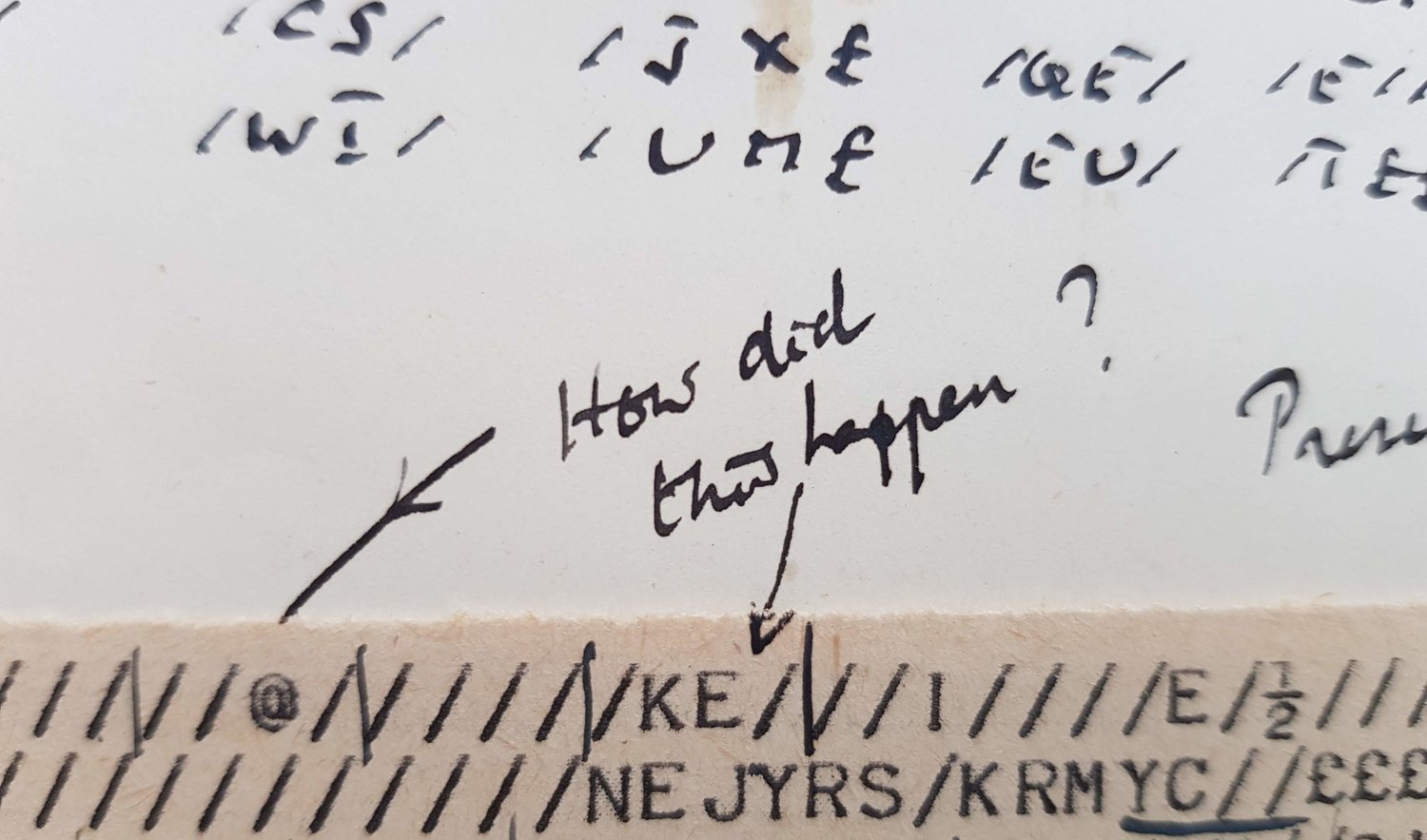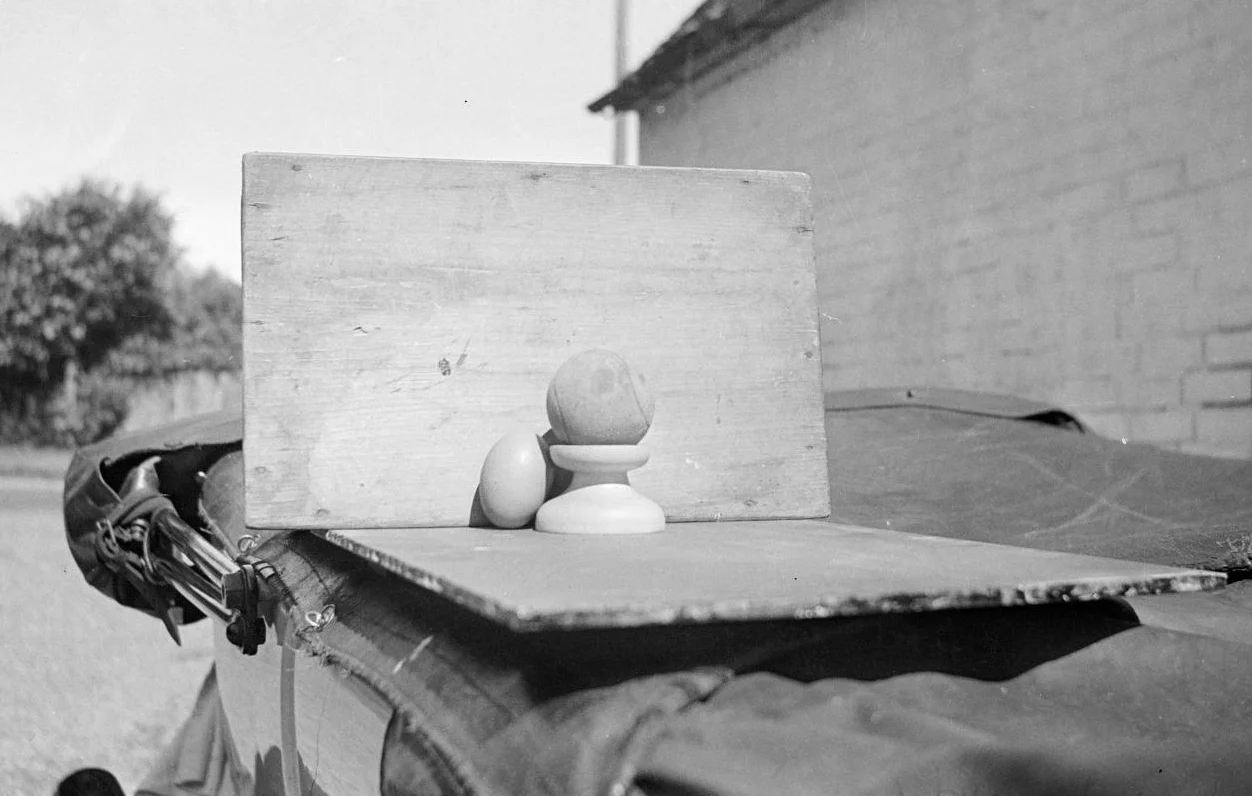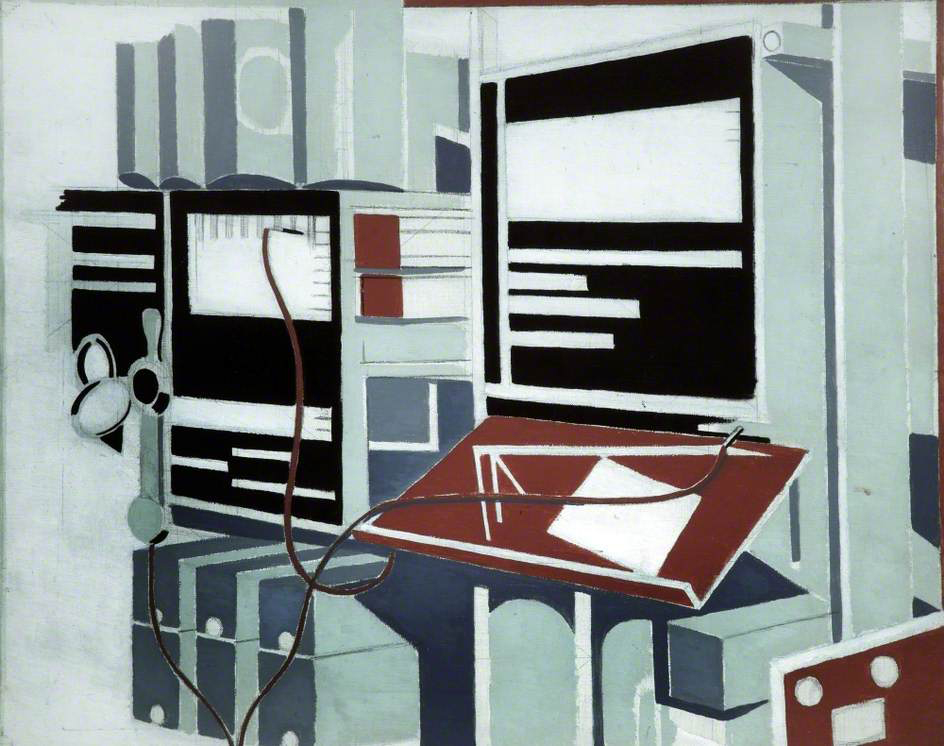One of the more visual pleasures of writing Alan Turing’s Manchester was spending an afternoon behind the scenes at Manchester Art Gallery. One of the threads that took me there was provided by Lyn Irvine, the friend of Alan Turing whose letters I largely relied on to understand the cultural world he inhabited. It wasn’t very full of art. But hers was, and she had been delighted in 1948 when ‘modern art’ arrived in Manchester in the shape of a posthumous exhibition by the British surrealist Paul Nash. One of them, Northern Adventure, took its name from the artist’s view north – to St Pancras; the carriage ramp up to the station is clearly recognisable in the background. His central London studio on Judd Street was as close as Nash came to Manchester in life, but Nash’s presence in Manchester owes a lot to the figure of Charles Rutherston, who had already started collecting Nash before the war (and could do with his own post one day).
Paul Nash, Northern Adventure, 1929. Aberdeen Art Gallery
Nash died at the age of 57, leaving his widow, the suffragette campaigner Margaret Odeh, in some financial difficulty. She put together a memorial exhibition for him which showed in London and, in September 1948, Manchester. The Tate archives have letters showing her campaign to have Manchester buy some of the paintings since, as she pointed out, they already had, via Rutherston, the nucleus of a collection and were such a good place to show them. Her campaign was presumably successful, since now the Whitworth and MAG hold five oils between them, while Northern Adventure went to Liverpool, perhaps a little surprising for a painter whose landscapes, for all their dream-like quality, are so firmly rooted in southern downland.
As a side note, I was able to look through the list of exhibitions that Manchester Art Gallery hosted in the post-war years. There were Spring Exhibitions showcasing the respectable, commercial local art of Manchester Academy of Fine Arts – including both Ethel Gabain and James Chettle, both of whom I discovered through writing the book. But there were also ambitious international shows, funded by the British Council and the newly formed Arts Council, offering relatively recent work by Picasso, Matisse, Cezanne, Klee, and Henry Moore.
All of Nash’s oils in UK public collections can be found at ArtUK. Thanks to Hannah Williamson at Manchester Art Gallery for letting me see the archives. (And to Emma who introduced me to Hannah and went to the Tate Archives for me).
Paul Nash, ‘Still life on car roof’, c1934, Tate Gallery.
Paul Nash, Telecommunications, 1934. Walker Art Gallery. I’m sure I read somewhere (but can’t now find) that this was a commission, which would make sense as it is very different from Nash’s normal subject matter. While I had admittedly been looking at lots of versions of the same photograph of the Manchester Baby just before I found this, and it is in any case somewhat absurd to treat as a visual record of 1930s telecommunications history, I immediately saw a resemblance here to the Manchester Baby which is not coincidence. The Baby, like the Colossus before it, was built in the the upright bedstead-like ‘frame’ architecture of pre-war telephony infrastructure.




